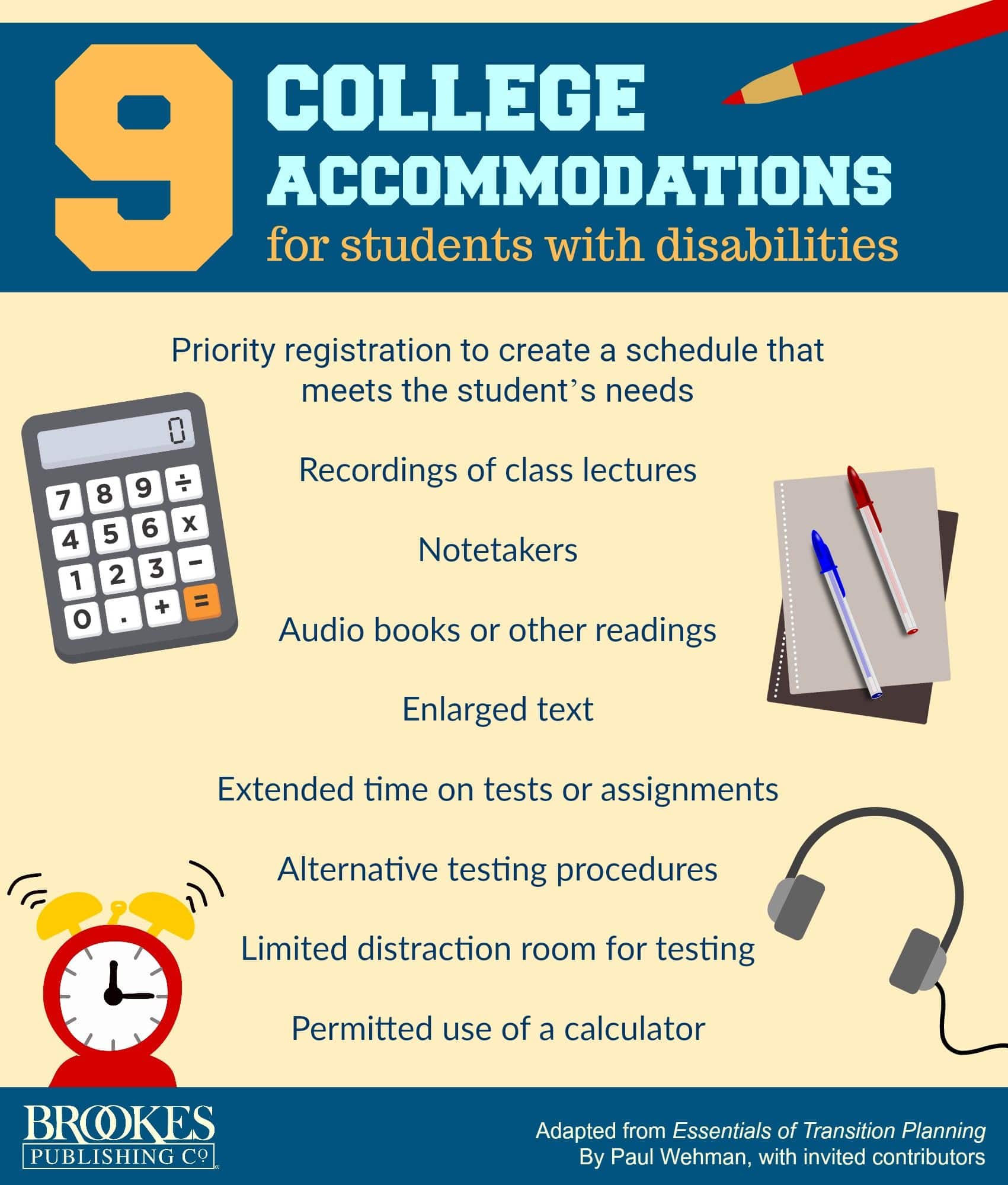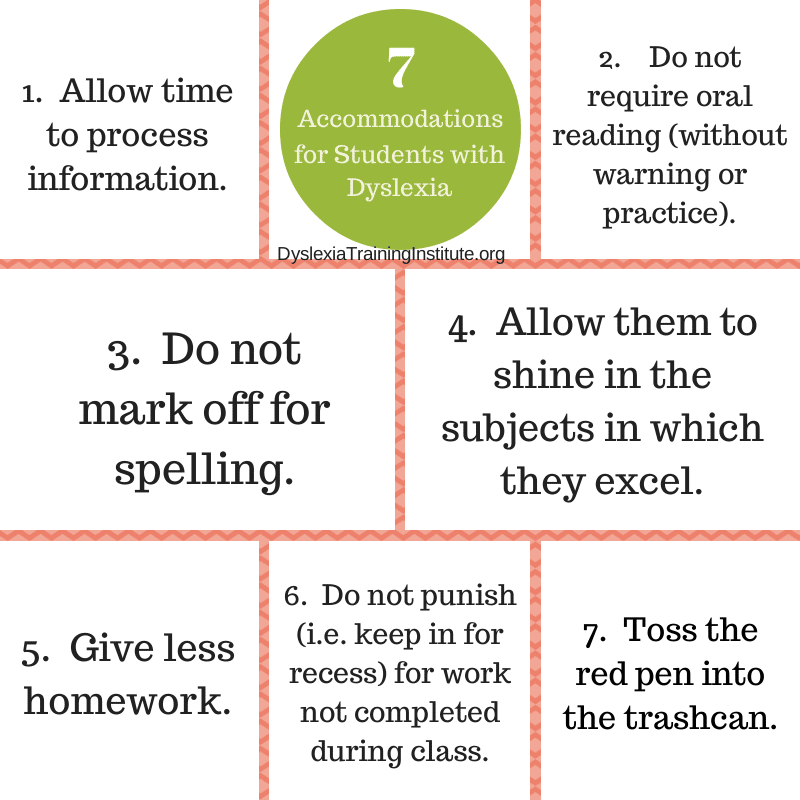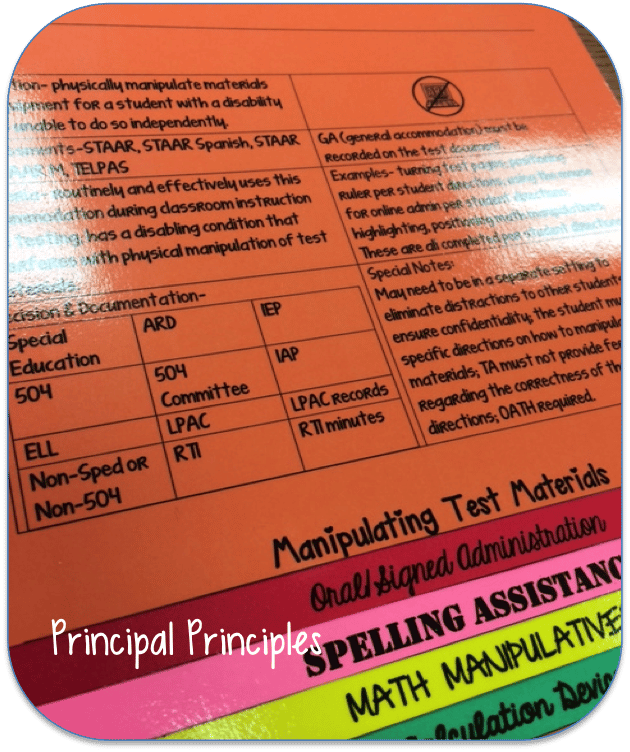Occasional Exceptions To The Absentee/tardiness Policy
The Americans with Disabilities Act, 1990, specifies that case-by-case exceptions should be made to established policy in order to avoid discrimination on the basis of a disability. The student is required to notify the faculty member as soon as possible. We also encourage them to let SDS know as well. Each faculty member makes the determination as to how many absences in general are acceptable in order to pass the class. In general, this should be no more than 2-3 additional absences. For a student with a disability, we must also look at: What are the essential elements of the course? How many absences would fundamentally alter the students ability to experience or ability to participate in or to contribute to and demonstrate learning?
The Individual Educational Plan
Every child with a disability who is eligible for ESE will have an IEP. This comprehensive written plan tells parents, the child, teachers, and other school staff which ESE services the school will provide your child. IEPs are developed during team meetings, and typically parents are involved in this process. The idea of IEPs is to outline different items, such as:
- The present level of academic achievement and functional performance
- Measurable annual goals
Services included in this list must be services the child is receiving.
Environmental Or Setting Accommodations Focus On Where
These are changes to the physical environment of the classroom. This could involve things like adjusting the lighting, providing a specific type of seating, or working in a different area of the classroom.
Not surprisingly, these are often included in IEPs and 504 plans to help students. However, they can be provided to any student based on need as long as you document what you’re doing.
Here are a few more examples:
- preferential seating
- access to online learning space
Read Also: Unlock Iphone That Is Disabled
Extra Time For Assignments
Some students have disabilities that make it difficult for them to complete a test or assignment in the same amount of time allotted for other students. This is usually referred to as extended time in the students IEP.
This accommodation is typically given in one continuous session. For example, if a test or assignment has a 60-minute limit and the student is given 30 minutes longer, those 30 minutes must be added to the original 60-minute time limit.
Students might need extra time for many reasons. Some students need the time to process questions and instructions. Others may have a disability that limits their dexterity or other physical ability.
Typical Accommodations For Students With Disabilities

Flexibility and effective communication between student and instructor is key in approaching accommodations. Although students with similar disabilities may require different accommodations, it is helpful to be aware of typical strategies for working with students who have various types of impairments.
Read Also: What Is The Elimination Period Of An Individual Disability Policy
College Accommodations For Students With Disabilities
All students with disabilities are eligible to receive accommodations in college. In order to receive them, a student must register with the colleges Office of Accommodations and complete the application process.
Obtaining accommodations in college is different than in high school, such as:
- It is the students responsibility to obtain and maintain accommodations.
- Depending on the college, the student may have to reapply for accommodations every semester or year.
- Students will have to submit accommodation requests for each exam to their colleges accessibility office in order to receive certain testing accommodations.
- Students should discuss the accommodations available at their specific college with an accessibility counselor during the application process.
Below is the process for students with disabilities to obtain accommodations. It takes time to put accommodations and assistive technology into place, and it is the students responsibility to provide necessary documentation in a timely manner.
List Of Testing Accommodations For Students With Disabilities
There are many testing accommodation options depending on the nature and the severity of the learner’s disabilities. There are three main groups of accommodations for students with disabilities:
| Presentation Accommodations | These accommodations allow students to access learning the information without having to read the standard visual print. Examples of presentation accommodations are:
|
These involve changing the environment in which the test is given. Examples include:
|
|
| Time and Scheduling Accommodations | These accommodations increase the time for assessment and make changes to how time is organized. Examples are
|
It is worth noting that the student’s accommodations are selected by both the parents and the educators at the IEP meeting.
You May Like: How Much Money For Disability
Sec 12184 Prohibition Of Discrimination In Specified Public Transportation Services Provided By Private Entities
General rule
No individual shall be discriminated against on the basis of disability in the full and equal enjoyment of specified public transportation services provided by a private entity that is primarily engaged in the business of transporting people and whose operations affect commerce.
Construction
For purposes of subsection of this section, discrimination includes
the imposition or application by an entity described in subsection of eligibility criteria that screen out or tend to screen out an individual with a disability or any class of individuals with disabilities from fully enjoying the specified public transportation services provided by the entity, unless such criteria can be shown to be necessary for the provision of the services being offered
the failure of such entity to
make reasonable modifications consistent with those required under section 12182 of this title
provide auxiliary aids and services consistent with the requirements of section 12182 of this title and
remove barriers consistent with the requirements of section 12182 of this title and with the requirements of section 12183 of this title
the purchase or lease by such entity of an over-the-road bus which does not comply with the regulations issued under section 12186 of this title and
any other failure of such entity to comply with such regulations and
Historical or antiquated cars
Exception
Definition
which is not less than 30 years old at the time of its use for transporting individuals
Response Accommodations Answer What
These are the different ways you allow students to demonstrate their understanding of the material. Response accommodations focus on the assessment of student learning and also answer what students will be asked to provide as evidence.
Examples include:
- the use of graphic organizers or concept maps
- multiple formats for showing learning
- multiple-choice questions instead of open-ended questions
- oral responses or a scribe for those who struggle with writing
- option to type any written work or record themselves answering
Hopefully, this gives you a little better understanding of what types of accommodations you might consider using or are already including in your math lessons.
Of course, there are more examples than those I’ve listed here, but keeping these four basic types in mind can help with your planning. It is always a good idea to have a conversation with the student’s parents or teacher about their needs so you can create a plan that best meets his/her needs!
Recommended Reading: Polycom Url Call Is Disabled
Leaving The Classroom When Symptoms Occur
Some students with medical conditions may need to leave the class if problems due to their medical condition occur. It is recommended that students who have issues during class, email or contact their instructor as soon as possible after the incident occurs and then work with the instructor to make up any missed work. If this happens continuously, SDS recommends that the instructor talk with the student and also talk with SDS to determine appropriate action.
Supports Modifications And Accommodations For Students
For many students with disabilitiesand for many withoutthe key to success in the classroom lies in having appropriate adaptations, accommodations, and modifications made to the instruction and other classroom activities.
Some adaptations are as simple as moving a distractible student to the front of the class or away from the pencil sharpener or the window. Other modifications may involve changing the way that material is presented or the way that students respond to show their learning.
Adaptations, accommodations, and modifications need to be individualized for students, based upon their needs and their personal learning styles and interests. It is not always obvious what adaptations, accommodations, or modifications would be beneficial for a particular student, or how changes to the curriculum, its presentation, the classroom setting, or student evaluation might be made. This page is intended to help teachers and others find information that can guide them in making appropriate changes in the classroom based on what their students need.
Don’t Miss: Short Term Disability Pregnancy Pre Existing Condition
Sec 12205a Rule Of Construction Regarding Regulatory Authority
The authority to issue regulations granted to the Equal Employment Opportunity Commission, the Attorney General, and the Secretary of Transportation under this chapter includes the authority to issue regulations implementing the definitions of disability in section 12102 of this title and the definitions in section 12103 of this title, consistent with the ADA Amendments Act of 2008.
Academic Accommodations For Students With Learning Disabilities

In recent years, the number of students diagnosed with disabilities who are attending postsecondary institutions has increased dramatically. Members of the largest group of students with disabilities have learning disabilities.
In most situations, a learning disability is not readily observable. Because there are no outward signs of a disability such as a white cane or wheelchair, students with learning disabilities are often overlooked or misunderstood. Some instructors and administrators suspect that students who claim to have learning disabilities are faking it, are playing the system, or lack the intelligence needed to succeed in college. Understanding the implications of learning disabilities, preparing to teach students with diverse characteristics, and learning to accommodate students with learning disabilities are essential for faculty and staff to provide academic and career opportunities for these students that are equivalent to those provided to their nondisabled peers.
Don’t Miss: Inclusion Of Students With Disabilities
Black Boys In Crisis Series
-
7 Ways That Black Students are Discriminated Against in U.S K-12 Schools
Spread the loveAfrican Africans have a long history of being mistreated in the United States, starting with slavery. It should come as no surprise that their children face the same …
-
The Edvocate Podcast, Episode 6: 8 Ways That Digital Age Teachers Avoid Burning Out
Spread the loveBeing a teacher is a tough job. So much so, many new teachers end up leaving the field within their first three years. To ensure that the next …
-
The Edvocate Podcast, Episode 5: The Archetype of a Great Teacher
Spread the loveOne of the questions that I am frequently asked is, what does a good teacher look like? I respond by mentioning my 10th-grade Biology teacher, Mrs. Minor, and …
Scenario : My Student Does Not Understand The Concepts Being Taught And Falls Behind Quickly
This student may need more repetitions and experience with the foundational parts of your instruction to master the skill. Here are some accommodations that can be helpful:
Read Also: Omaha Mutual Short Term Disability
Who Is Eligible For An Accommodation
A student must meet two criteria to be eligible for an accommodation. First, the student must meet the essential or requisite eligibility requirements of the program, service or activity in which he or she wishes to participate with or without an accommodation. This means that the student must meet the requisite eligibility requirements in spite of his or her disability. Second, the student must have a documented disability as defined by the Americans with Disabilities Act or the Rehabilitation Act.
Academic Accommodations For Students With Psychiatric Disabilities
Tens of thousands of students enrolled in American postsecondary institutions report having a mental illness. Recent increases in the size of this group are due in part to improved medications that result in symptoms mild enough for them to enjoy the benefits and meet the challenges of postsecondary education. Students with psychiatric disabilities are entitled to reasonable academic accommodations as provided by the American Disabilities Act of 1990 and 2008 amendments. Providing effective accommodations allows students equal access to academic courses and activities. The presence of students with disabilities also contributes to the diversity of the student population.
Recommended Reading: Va Disability Percentages For Conditions
Additional Time On In
Some students due to their disability may require additional time on any in-class writing. SDS recommends that the faculty member and the student work out how to best handle this situation directly. If there are any questions, please feel free to contact SDS. This would not apply to an online course where the assignment is essentially completed at home over a pre-determined period of time.
For Learning Disabilities And Attention Deficit Hyperactivity Disorder
- Seating location
- Use of a notetaker or tape recorder
- Extended test time
- Alternative location for a test
- Use of memory aids such as a calculator, thesaurus, spell checker, or formula cards. Directions and deadlines given both orally and in writing
- Use of visual aids when possible
- Use of a word processor to take a test. Student may utilize: Kurzweil 1000 and 3000, IBM Via Voice, Dragon Naturally Speaking
- Reduce the writing load through the use of handouts, supplementary texts, etc.
Also Check: Do Spouses Of 100 Disabled Veterans Get Dental Benefits
Factors To Consider When Selecting Accommodations
The following are essential questions to ask during the selection process:
- What are the learner’s learning strengths and weaknesses?
- How does the student’s learning disability affect their academic performance?
- What special accommodations will help the student perform better?
- Has the student used accommodations before, and if so, how well have they worked in the past?
Sec 12202 State Immunity

A State shall not be immune under the eleventh amendment to the Constitution of the United States from an action in Federal or State court of competent jurisdiction for a violation of this chapter. In any action against a State for a violation of the requirements of this chapter, remedies are available for such a violation to the same extent as such remedies are available for such a violation in an action against any public or private entity other than a State.
You May Like: Va Disability Rating For Lower Back Pain
Introduction To The Americans With Disabilities Act
The Americans with Disabilities Act , landmark civil rights legislation, was enacted in 1990. ADAs purpose is to ensure that people with disabilities are granted equal access to employment, public services, places of public accommodation, transportation, and telecommunications.
Title II of the Americans with Disabilities Act prohibits discrimination against people with disabilities by public entities. These provisions include publicly funded educational institutions such as universities, colleges, and technical schools. Privately funded educational institutions are subject to similar non-discrimination requirements under Title III of the Act and employers are covered under Title I.
The prohibition against discrimination is very broad and encompasses all the programs, activities, and services that your institution provides. In general the Act requires that people with disabilities have an equal opportunity to benefit from or participate in your services.
A major thrust of the ADA is to ensure that people with disabilities gain access to the mainstream of American society. Access to education is one key to opening the doors of mainstream society to people with disabilities.
What Kind Of Documentation Is Sufficient To Support A Request For Testing Accommodations
All testing entities must adhere to the following principles regarding what may and may not be required when a person with a disability requests a testing accommodation.
- Documentation. Any documentation if required by a testing entity in support of a request for testing accommodations must be reasonable and limited to the need for the requested testing accommodations. Requests for supporting documentation should be narrowly tailored to the information needed to determine the nature of the candidates disability and his or her need for the requested testing accommodation. Appropriate documentation will vary depending on the nature of the disability and the specific testing accommodation requested.
Examples of types of documentation include:
- Recommendations of qualified professionals
- Results of psycho-educational or other professional evaluations
- An applicants history of diagnosis and
- An applicants statement of his or her history regarding testing accommodations.
Recommended Reading: How Much Money Can You Make On Disability Social Security
What Testing Accommodations Must Be Provided
Testing entities must ensure that the test scores of individuals with disabilities accurately reflect the individuals aptitude or achievement level or whatever skill the exam or test is intended to measure. A testing entity must administer its exam so that it accurately reflects an individuals aptitude, achievement level, or the skill that the exam purports to measure, rather than the individuals impairment .3
- Example: An individual may be entitled to the use of a basic calculator during exams as a testing accommodation. If the objective of the test is to measure ones ability to solve algebra equations, for example, and the ability to perform basic math computations , is secondary to the objective of the test, then a basic calculator may be an appropriate testing accommodation. If, however, the objective of the test is to measure the individuals understanding of, and ability to perform, math computations, then it likely would not be appropriate to permit a calculator as a testing accommodation.